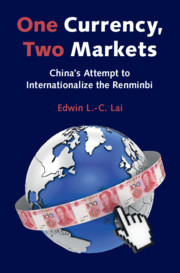Book contents
- One Currency, Two Markets
- One Currency, Two Markets
- Copyright page
- Dedication
- Contents
- Figures
- Tables
- Boxes
- Preface
- Acknowledgments
- A Short Summary of This Book
- Abbreviations
- 1 Introduction
- 2 China’s Aversion to a Floating Exchange Rate
- 3 Why Does China Want to Internationalize the RMB?
- 4 China’s Strategy of Internationalizing the RMB
- 5 The Importance of Capital Account Liberalization
- 6 The Importance of Financial Sector Reform
- 7 The Importance of the Offshore RMB Market
- 8 The Potential of the RMB as a Payment Currency
- 9 The Prospects of RMB Internationalization
- References
- Further Reading
- Index
3 - Why Does China Want to Internationalize the RMB?
Published online by Cambridge University Press: 17 June 2021
- One Currency, Two Markets
- One Currency, Two Markets
- Copyright page
- Dedication
- Contents
- Figures
- Tables
- Boxes
- Preface
- Acknowledgments
- A Short Summary of This Book
- Abbreviations
- 1 Introduction
- 2 China’s Aversion to a Floating Exchange Rate
- 3 Why Does China Want to Internationalize the RMB?
- 4 China’s Strategy of Internationalizing the RMB
- 5 The Importance of Capital Account Liberalization
- 6 The Importance of Financial Sector Reform
- 7 The Importance of the Offshore RMB Market
- 8 The Potential of the RMB as a Payment Currency
- 9 The Prospects of RMB Internationalization
- References
- Further Reading
- Index
Summary
In Chapter 3, I discuss why China wants to internationalize the RMB. First, the international monetary system, which is dominated by the USD as the major reserve currency, is asymmetric, in the sense that as developing countries like China try to peg to the USD, they lose the autonomy in monetary policy, but the United States has total autonomy in conducting its monetary policy. Second, as China wanted to safeguard the dollar peg, it accumulated a huge USD foreign exchange reserve, which earned a very low rate of interest and was subject to losses due to USD depreciation. Third, the global financial crisis in 2008 caused a shortage of the dollar all over the world. This further motivated China to promote the use of RMB internationally so as to escape from the “dollar trap”. Fourth, for ideological, historical, and cultural reasons, there is a strong desire for China to become independent of the United States and an international monetary system dominated by the USD. Fifth, there is a desire to use external commitment to force internal reforms, which is called “daobi” in Chinese. I also discuss the pros and cons of RMB internationalization to China and to the world, and why Japan did not internationalize the yen.
Keywords
- Type
- Chapter
- Information
- One Currency, Two MarketsChina's Attempt to Internationalize the Renminbi, pp. 37 - 57Publisher: Cambridge University PressPrint publication year: 2021
- 1
- Cited by



